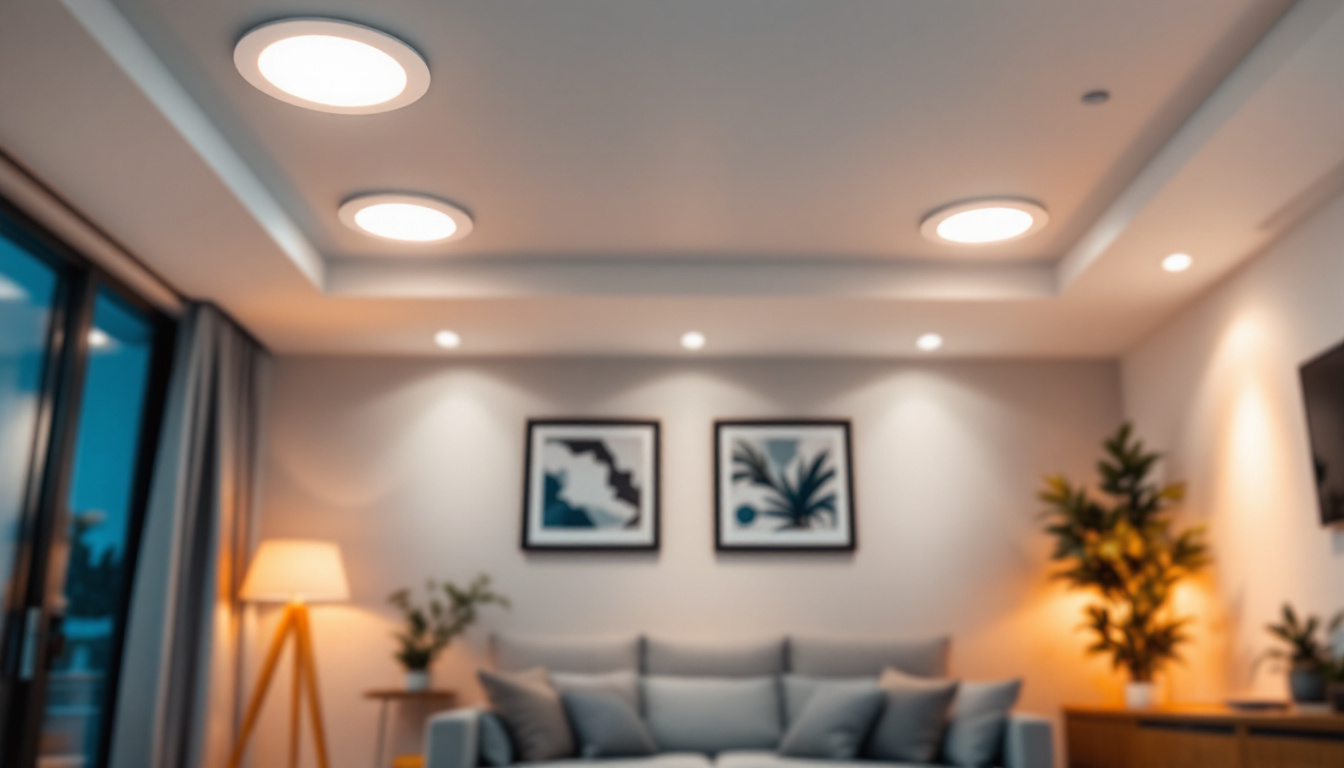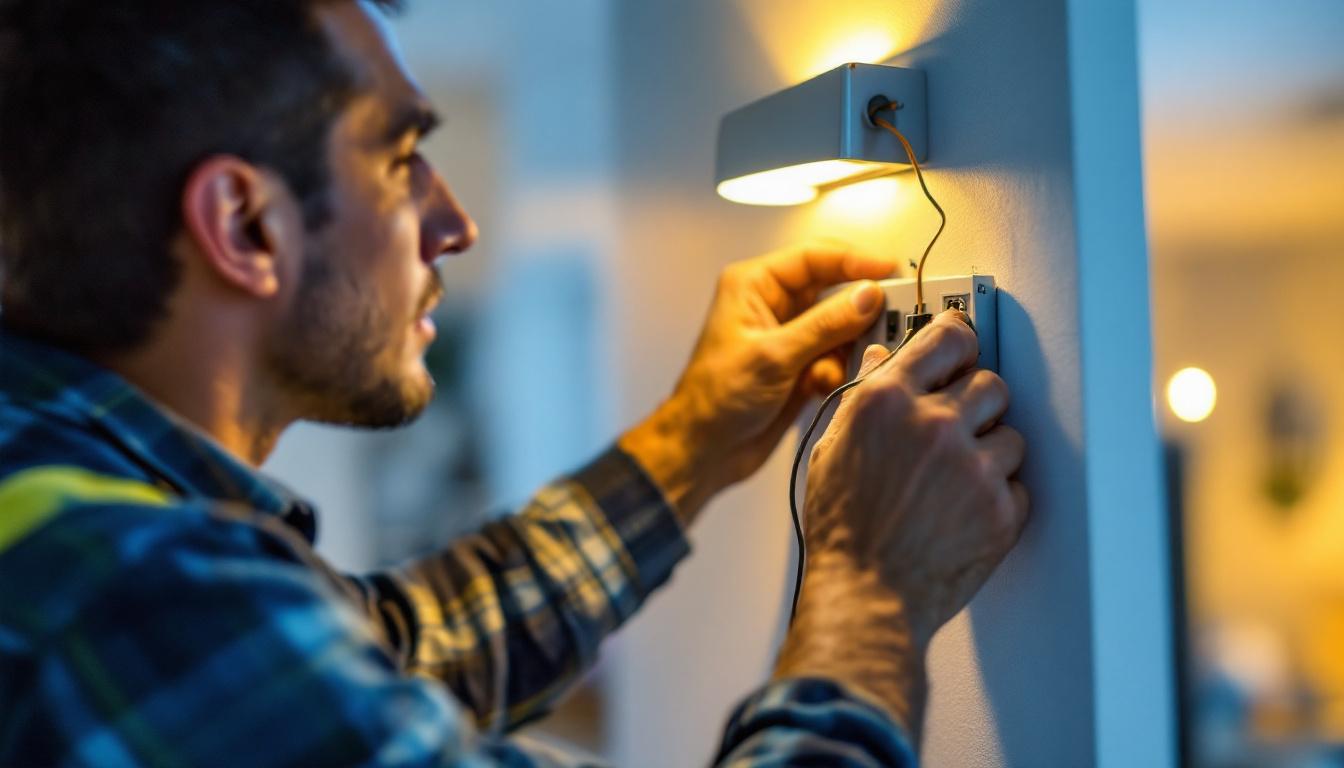
In the competitive landscape of industrial lighting, contractors often face the challenge of selecting the right products that meet both client needs and regulatory standards. Sanford, Florida, is home to a variety of industrial lighting products that can cater to diverse applications. This article delves into the pros and cons of these products, providing valuable insights for lighting contractors navigating this complex market.
Industrial lighting encompasses a range of fixtures designed for use in manufacturing, warehousing, and other commercial environments. These products are essential for ensuring safety, efficiency, and productivity in workplaces. The types of industrial lighting products available in Sanford include LED fixtures, high-intensity discharge (HID) lights, and fluorescent options.
Each type of industrial lighting product has its unique characteristics and applications. LED fixtures are known for their energy efficiency and long lifespan, making them a popular choice among contractors. They can last up to 50,000 hours and consume significantly less energy compared to traditional lighting solutions, which translates to lower electricity bills and reduced maintenance costs. HID lights, while less energy-efficient, provide high-intensity illumination suitable for large spaces, such as warehouses and factories, where bright lighting is necessary to ensure worker safety and operational efficiency. Fluorescent lights, on the other hand, offer a balance between cost and performance, often utilized in areas requiring consistent lighting, such as assembly lines and storage areas. Their ability to provide a broad spectrum of light makes them versatile for various applications.
Industrial lighting products find their applications across various sectors, including manufacturing, logistics, and retail. In manufacturing, adequate lighting is crucial for safety and precision, as workers need to see clearly to avoid accidents and ensure quality control. The right lighting can also enhance productivity by reducing eye strain and fatigue. In logistics, proper illumination enhances visibility, thereby reducing accidents and ensuring that goods are handled safely and efficiently. Moreover, well-lit loading docks and storage areas can streamline operations and improve overall workflow. Retail spaces benefit from well-designed lighting that highlights products and creates an inviting atmosphere, encouraging customers to explore and engage with merchandise. Strategic lighting can also influence consumer behavior, making it an essential element in retail design and marketing strategies.
Lighting contractors in Sanford can leverage several advantages when choosing industrial lighting products. Understanding these benefits can aid in making informed decisions that align with client expectations and project requirements.
One of the most significant advantages of modern industrial lighting products is their energy efficiency. LED fixtures, in particular, consume significantly less power compared to traditional lighting options. This reduction in energy consumption not only lowers utility bills for clients but also contributes to environmental sustainability. Contractors can promote energy-efficient solutions as a selling point, appealing to eco-conscious clients. Furthermore, many regions offer incentives or rebates for businesses that upgrade to energy-efficient lighting, providing an additional financial benefit that contractors can highlight during consultations.
Another compelling advantage is the longevity of industrial lighting products. LED fixtures can last up to 25,000 hours or more, drastically reducing the need for frequent replacements. This longevity translates to lower maintenance costs and less downtime for businesses. Contractors can highlight these benefits to clients, emphasizing the long-term savings associated with high-quality lighting products. Additionally, the reduced frequency of replacements means that contractors can focus their efforts on other projects, enhancing their overall productivity and allowing for better resource management.
Proper lighting is essential for safety in industrial settings. Well-lit environments reduce the risk of accidents and enhance visibility for workers. Additionally, adequate lighting has been shown to improve productivity by creating a more conducive working environment. Contractors can advocate for the importance of quality lighting in enhancing overall workplace safety and efficiency. Studies have indicated that employees working in well-lit spaces report higher levels of job satisfaction and lower fatigue, which can lead to improved morale and retention rates. By emphasizing these aspects, contractors can present a compelling case for investing in superior lighting solutions that not only meet regulatory standards but also foster a healthier workplace culture.
While there are numerous advantages, it is essential to consider the challenges associated with industrial lighting products. Being aware of these disadvantages can help contractors navigate potential pitfalls and provide comprehensive solutions to clients.
One of the primary challenges lighting contractors may face is the initial cost of high-quality industrial lighting products. Although energy-efficient solutions like LEDs offer long-term savings, the upfront investment can be substantial. Contractors must be prepared to justify these costs to clients who may be hesitant to invest in more expensive options. Providing a detailed cost-benefit analysis can help mitigate concerns. Additionally, it’s worth noting that the initial costs can also vary significantly based on the scale of the project and the specific requirements of the facility. For instance, a large manufacturing plant may require a more extensive lighting setup, which can further amplify the initial financial outlay. Therefore, contractors should also consider offering financing options or phased implementation strategies to ease the financial burden on their clients.
Another potential drawback is the compatibility of new lighting products with existing systems. In some cases, retrofitting older buildings with modern lighting solutions may require additional modifications, leading to increased installation costs and time. Contractors should conduct thorough assessments of existing infrastructure to identify potential compatibility issues before recommending specific products. Moreover, the installation process can be complicated by the need for specialized equipment or expertise, particularly in environments with hazardous conditions or where precision is critical. This can lead to delays and unexpected costs that may frustrate both contractors and clients. To mitigate these risks, it is advisable for contractors to collaborate closely with electrical engineers and other specialists to develop a comprehensive installation plan that addresses potential challenges upfront.
Lighting contractors must also navigate the complex landscape of regulations and standards governing industrial lighting. Compliance with local and national codes is crucial to avoid penalties and ensure safety. Staying informed about changing regulations is essential for contractors to provide clients with compliant solutions. This may require ongoing education and training to keep up with industry standards. Additionally, contractors need to be aware of specific industry guidelines that may apply, such as those set by the Occupational Safety and Health Administration (OSHA) or the National Fire Protection Association (NFPA). These regulations can dictate not only the types of lighting used but also their placement and maintenance. As a result, contractors should prioritize building strong relationships with regulatory bodies and industry associations to stay updated on best practices and emerging trends that could impact their projects.
When selecting industrial lighting products for clients, contractors must consider various factors that influence the decision-making process. Understanding client needs, project specifications, and budget constraints is vital for providing tailored solutions.
Every client has unique requirements based on their specific industry and operational needs. Conducting a thorough assessment of the client’s workspace, including the layout, existing lighting conditions, and intended use of the space, is essential. This information will guide contractors in recommending the most suitable lighting products that meet both functional and aesthetic criteria.
Contractors should also evaluate the specifications of available products, including lumen output, color temperature, and beam angle. These factors play a crucial role in determining the effectiveness of the lighting solution. For instance, a manufacturing facility may require high lumen output for detailed tasks, while a warehouse may prioritize broad coverage for safety. Matching product specifications to client needs is key to ensuring satisfaction.
Budget constraints are a common consideration for clients when selecting industrial lighting products. Contractors must work within these limitations while still providing quality solutions. Offering a range of products at different price points can help clients make informed decisions without compromising on quality. Additionally, discussing the long-term savings associated with energy-efficient options can justify higher upfront costs.
The industrial lighting landscape is continually evolving, driven by technological advancements and changing client expectations. Staying abreast of current trends can help contractors remain competitive and offer innovative solutions.
One of the most significant trends in industrial lighting is the integration of smart technologies. Smart lighting systems allow for remote control, dimming, and automated adjustments based on occupancy and daylight levels. These features not only enhance energy efficiency but also provide flexibility for clients. Contractors who offer smart lighting solutions can position themselves as forward-thinking and responsive to modern demands.
As sustainability becomes a priority for many businesses, the demand for eco-friendly lighting solutions is on the rise. Products that utilize recycled materials, have low environmental impact, or are designed for easy recycling at the end of their lifespan are increasingly sought after. Contractors can capitalize on this trend by promoting sustainable lighting options that align with clients’ corporate social responsibility goals.
In addition to functionality, there is a growing emphasis on the aesthetics of industrial lighting products. Clients are increasingly looking for fixtures that not only perform well but also enhance the overall design of their spaces. Contractors should be prepared to offer a variety of styles and designs that cater to different aesthetic preferences while maintaining performance standards.
In the realm of industrial lighting, contractors in Sanford, Florida, have access to a diverse array of products that can meet various client needs. Understanding the pros and cons of these products is essential for making informed decisions that align with project requirements and client expectations. By considering factors such as energy efficiency, longevity, and safety, contractors can advocate for high-quality solutions that benefit both clients and the environment.
While challenges such as initial costs and regulatory compliance exist, they can be navigated through thorough assessments and informed recommendations. By staying abreast of industry trends, including smart technologies and sustainability initiatives, contractors can position themselves as leaders in the field. Ultimately, the right industrial lighting products can enhance safety, productivity, and aesthetics, making them a vital investment for any industrial operation.
Ready to elevate your industrial lighting projects while maximizing value? Look no further than LumenWholesale for a comprehensive range of spec-grade lighting products. Our commitment to quality and affordability ensures that you can provide your clients with the best lighting solutions without the burden of inflated costs. Take advantage of our wholesale prices, free shipping, and exceptional selection to meet and exceed industry standards. Choose LumenWholesale and make the smart choice for your business—where premium lighting meets unbeatable value.

Discover the ultimate guide for lighting contractors on selecting and installing 4 LED recessed can lights.

Discover innovative strategies and expert tips from top lighting contractors on how to effectively implement hanging lighting solutions.

Discover how the choice of wall sconce electrical boxes can significantly influence the efficiency and aesthetics of lighting projects for contractors.

Discover how LED light strips under cabinets can revolutionize the workflow for lighting contractors.